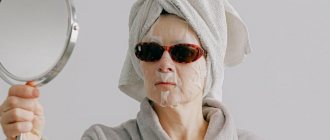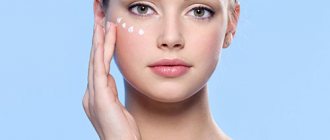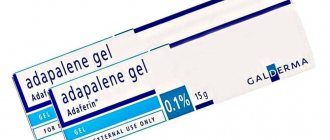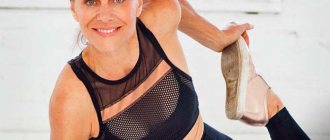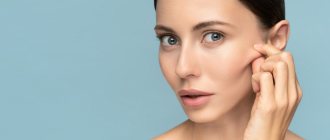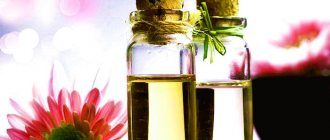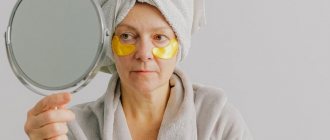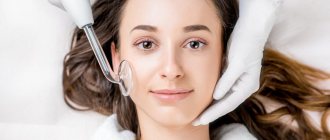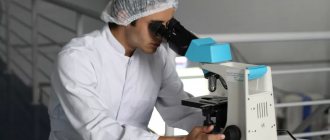Photoaging is the aging of the skin of the face, body, and hands under the influence of ultraviolet rays. This is a completely different type of skin aging, different from natural ageing. Photoaging is a type of skin “damage” that depends on external factors - excessive exposure to UV radiation.
The main signs of photoaging: loss of skin tone, dryness, solar lentigo, wrinkles, pigmentation, rosacea, visible dilated capillaries, spider veins.
How does it appear? UVA rays penetrate deep into the skin, reducing elasticity and firmness, causing the formation of wrinkles, age spots and freckles. UVA rays cause much more serious and profound changes in the skin than UVB rays and can provoke the development of skin cancer.
Photoaging occurs at any age, starting from 20 years.
Today, photoaging is classified according to the Glogau scale. There are 4 stages of skin aging depending on age and the signs that appear. Depending on the condition, the Beauty Practice Clinic doctor will provide appropriate treatment.
Ages 20 to 35 years : no wrinkles, light pigmentation, no visible deep wrinkles and no keratoses.
Age from 35 to 50 years : moderate aging, manifested by the formation of facial wrinkles around the mouth and eyes, pronounced changes in skin pigmentation.
Age over 50 years : pronounced photoaging, characterized by an abundance of wrinkles, visible even at rest, the presence of obvious symptoms of telangiectasia, as well as dyschromia.
Age from 60 to 80 years : extreme photoaging, the skin becomes yellow-gray in color, pronounced wrinkles appear on the entire surface of the skin, there may be pre-malignant changes in the skin. Risk groups: fair skin, pregnancy, menopause, period of hormonal disorders.
Skin photoaging: what is it?
This term hides the premature appearance of wrinkles and other age-related changes that occur as a result of the negative effects of ultraviolet radiation.
And you shouldn’t think that this problem will affect anyone but young people. The process can be started at 22-23 years old or even earlier. Much depends on how often and for how long a person is exposed to direct sunlight. Please note that we are not even talking about solarium; it is generally the enemy of health.
Yes, you can develop the excellent habit of applying cream with a protection level of more than 30 SPF to all exposed areas of the body, but still encounter this phenomenon. Because it has a cumulative effect. Some researchers are generally confident that the body “remembers” all damage to the epithelium and dermis from childhood, and then, under the influence of some provoking factor, it malfunctions. In general, it’s time to understand the nature of the problem.
“Combined” type of aging
This type of aging includes a combination of various proportions of signs of fine-wrinkle and deformation types of aging, and is the most common and most common. It is characterized by the presence of fine wrinkles and deforming ptosis of soft tissues.
Such women have manifestations of decreased turgor and wrinkling on the face and neck, combined with deformation of soft tissues. Combination (mixed) skin. In such cases, fine wrinkles and dry atrophic skin predominate on the forehead and around the eyes, combined with bags above and below the eyes, an unclear oval of the face, jowls, deep nasolabial and “puppet” wrinkles.
Facial rejuvenation techniques for “combined” type of aging
For the “combined” type, a competent combination and alternation of cosmetic procedures and plastic surgeries is effective.
1) Cosmetic procedures aimed at improving microcirculation, activating lymphatic drainage, improving the tone of facial muscles, stimulating the production of collagen, elastin, hyaluronic acid, restoring facial volume, preventing and reducing wrinkles:
- Competent care for the skin of the face and neck at home;
- A visit to a cosmetologist for professional care of the skin of the face and neck, which will include: non-invasive methods (facial cleansing, massage, moisturizing, nourishing and modeling masks, superficial and medium chemical peels of the skin);
- physiotherapeutic methods (myostimulation, microcurrent and ultrasound therapy, laser fractional rejuvenation);
- invasive methods (biorevitalization, bioreinforcement and contouring with hyaluronic acid; mesotherapy with homeopathic and vitamin cocktails; botulinum toxin for the prevention and elimination of wrinkles of varying depths).
2) Surgical technique depending on the severity of age-related changes:
- blepharoplasty;
- various options for surgical facelifts;
- contour plastic surgery of the face using one's own adipose tissue - lipofilling - to improve the quality of the skin and restore lost volumes in the middle zone of the face;
- laser facial resurfacing alone or in combination with lipofilling;
- mesotherapy with autologous fibroblasts.
Mechanism of photoaging
We look so fresh and young thanks to lipids and proteins:
- The former retain moisture and form a barrier that effectively prevents the negative effects of external factors.
- The latter are the source of strength, elasticity, and resilience.
But they are gradually destroyed by ultraviolet radiation. Due to radiation, free radicals appear in the deep layers of the skin, which are oxidizing agents and damage collagen fibers. As a result, the latter cross-link and cease to fulfill their role, namely, to spring back and return the epithelium to its original state after physical contact. As a result, the surface of the body becomes uneven and wrinkled.
The catch is that in youth, the damage from UV rays is neutralized by melanocytes - special cells of the epidermis. By triggering an absorption reaction, they produce a dark pigment and thus provide a tan. But with age, these “helpers” become fewer and their levels decrease, which worsens the body’s protective functions. It is for this reason that moles and areas with a change in natural color appear on the body.
Such metamorphoses are recorded in a DNA molecule, which is subsequently reproduced in exactly this damaged form and, which is also bad, is inherited, affecting the genetics of children and grandchildren.
How to determine the degree of photoaging for prevention
This can be done based on characteristic signs - to find them or make sure of their absence, just look carefully at yourself in the mirror. For ease of comparison, we present them in table form.
| Stage | Age, in years | Manifestations |
| I | 20-30 | There are practically no superficial wrinkles, the stratum corneum does not grow (there is no hyperplasia), pigmentation is moderate. |
| II | 30-40 | There are facial folds, the skin tone is yellow, foci of keratosis are not visible, but they can be detected by touch. |
| III | 40-60 | Spider veins are present, dyschromia is noticeable, hyperkeratosis is observed, and the wrinkles are already deep. |
| IV | more than 60 | There is lenticular spotting (lentigo) and neoplasms. |
Is there a possibility of making a mistake? Let's see what medicine says about this.
Clinical picture of photoaging of facial skin: what kind of problem is it?
All characteristic manifestations have long been described in detail in cosmetology and other specialized literature. And as soon as they called the epidermis after premature changes: both “sailor” and “peasant”. The term we are considering today appeared and became established only in the 80s of the twentieth century.
Although names and definitions are not the main thing. More importantly, today we know for sure that there are 2 types of effects of UV rays on the skin:
- acute - occurs quickly and at a certain moment, causes burns, provokes pigmentation;
- chronic - accumulates over time, because of which the vessels undergo changes, elasticity and turgor decrease, and neoplasms appear.
In addition, there are clear parameters by which you can determine whether the epidermis is healthy or not:
- its shade;
- degree of moisture;
- texture;
- tone;
- resistance to external aggressive environments;
- absence of disease.
In case of problems, all violations are not just expressed, but visually noticeable.
Signs of photoaging of facial skin (with photo)
The following “alarm bells” will help you understand that premature age-related changes have begun:
- The dermis has acquired a dull and uneven shade, lentigo (brown spots) have appeared in some places, and dyschromia is observed.
- By feeling the cheekbones, cheeks, chin, you can detect roughness - actinic keratosis; senile acne popped up.
- The epidermis has become noticeably drier.
- Vascular lesions are visible: venous lakes, asterisks, and the like.
- Wrinkles appeared suddenly; they are not only superficial, but also deep.
- The volume of tissue has decreased, which is why there is sagging and unevenness - the contour of the face has “swollen”.
There are other indicators too, and you can focus on them.
Histological signs of photoaging
They are internal, so you need to use your imagination and imagine what the epidermis looks like in cross-section. If we move from the stratum corneum, the picture will be as follows:
- The epithelium is either atrophied or suffers from hyperkeratosis.
- Melanocytes are unevenly distributed, although this should not be the case.
- The basal cells, which act as “building material,” are damaged.
- The membranes have become much thicker.
- Collagen fibers have lost their normal structure and become intertwined.
At the same time, some may notice these “alarm bells” earlier, others later, and still others may not encounter them at all. Why is this happening?
Young and old faces have different proportions
Our view notes two components: the quality of the skin with its defects and the shape of the face, that is, proportions. The human brain subconsciously evaluates a face as young or old based on remembered and associated image patterns. The assessment is based on the shape of the face and the relationship between individual elements.
The proportions of a child's face are completely different from those of an adult. In mature people, these proportions are constantly changing due to the reconstruction of the craniofacial bone, thinning of muscle tissue, subcutaneous tissue and the skin itself, which is further tightened by gravity.
Who is most susceptible to ultraviolet aging?
There are 4 risk groups – let’s look at the features of each of them.
People with very fair skin
They were unlucky from birth, and the paler they are, the more careful they must be. In hot weather, it is better to wear clothes with long or at least medium sleeves, as well as hats with wide brims - so that as little sun as possible falls on the body. Yes, a beautiful tan is something you want to show off after a vacation at the seaside, but health is more important.
You should remember the cumulative effect: get burned a couple of times and the processes of age-related changes have already started. And this also applies to children, because their epithelium is even more delicate than yours and mine. If a child of 7-10 years old gets several sunburns, the likelihood that after 40 years of age he will get skin cancer will increase by 2 times.
Girls and women experiencing hormonal changes
The activity, and therefore the effectiveness, of melanocytes strongly depends on the background of the body. There are several key periods of “perestroika”:
- puberty;
- pregnancy and postpartum period;
- menopause.
During them you need to be especially careful, as sensitivity to UV rays increases; with hypo- and hyperthyroidism, a shift in the balance of estrogen and/or progesterone, by the way, too.
Smokers
Tell me, what are the benefits of cigarettes? They only bring harm, and for the epidermis and lungs they are almost the first enemies. They are the ones who provide a grayish-yellow, unhealthy complexion and provoke premature age-related and genetic changes.
And men, by the way, are also better off giving them up.
Solarium fans
Due to their aggressive action, doses of type A (UVA) radiation undermine the body’s natural defenses, penetrating into the deep layers of the epidermis and destroying the bonds of collagen and elastin molecules - the natural “building materials” of our body.
Therefore, the price for a spectacular tan is too high.
"Tired" type of aging
The first age-related changes appear on the face. In the morning, after a full rest, the face looks fresh, and in the evening it looks sad and tired: bags and dark circles appear under the eyes, the nasolacrimal and nasolabial furrows begin to appear, the corners of the mouth droop sadly. The shape of the face remains unchanged, although its youthful roundness has already disappeared.
The “tired” type of aging is more pronounced in women of normal or thin build, middle age with an oval or diamond-shaped face, with normal skin in youth and moderately dry skin in middle age, with average expression of the subcutaneous fat and muscle layer.
This type of aging is characterized by dryness, decreased skin turgor and elasticity. Dull, uneven, grayish complexion, swelling and pastiness are caused by impaired lymphatic drainage and blood supply, which lead to tissue hypoxia. Initial lipoatrophy (decreased thickness of the subcutaneous fat layer) and decreased tone of facial muscles leads to a decrease in the fullness of the soft tissues of the face. Age-related tissue decline has already begun, but permanent wrinkles have not yet formed.
Rejuvenation techniques for the “tired” type of aging
The “tired” of age-related changes responds gratefully to any care, so various cosmetic procedures come first in terms of efficiency and rationality, with plastic surgery joining later.
1) Cosmetic procedures aimed at improving microcirculation, improving the tone of facial muscles, stimulating the production of collagen, elastin, hyaluronic acid and restoring facial volumes:
- Competent skin care for the face and neck at home
- A visit to a cosmetologist for professional skin care for the face and neck, which will include:
- non-invasive methods (facial cleansing, massage, moisturizing, nourishing and modeling masks, superficial chemical peeling of the skin);
- physiotherapeutic methods (myostimulation, microcurrents and ultrasound therapy);
- invasive methods (biorevitalization, bioreinforcement and contouring with hyaluronic acid gels, mesotherapy with homeopathic and vitamin cocktails).
2) Surgical technique
- contour plastic surgery of the face using one’s own adipose tissue – lipofilling – to improve the quality of the skin and restore facial volumes lost due to lipoatrophy.
How to combat photoaging: current methods
You should not be shy, but use at least a few harmless and effective rejuvenation tools. There are many of them, but they can be divided into 3 groups:
- Work on posture - to eliminate curvature of the spine, stretch the neck, ensure correct head position; this will help normalize blood flow, microcirculation, and nutrient delivery processes.
- Various exercises – to train elasticity and stimulate collagen production; The key one is self-massage - using a dry brush and a gouache scraper.
- Anti-aging care – cosmetic and medicinal.
Now let's move on to specific options, methods and solutions.
Kurasen is an effective remedy for photoaging
This is a unique innovative drug, the main component of which is the hydrolyzate of the human placenta. It is completely safe (confirmed by research and certificates). Used for injections into a variety of areas of the body (décolleté, neck, face, hands, thighs, forearms).
Features a complex action:
- restores the life cycle of cells and slows down their aging;
- activates its own reserves of the dermis;
- improves metabolism;
- increases immunity and reparative potential.
This leads to thickening of the epidermis, lightening of age spots, smoothing out deep and medium wrinkles.
Positive dynamics are noted after the first Curasen procedure, visual results are noticeable after 5 procedures.
Cosmeceuticals against UV aging
Its achievements should be used to your advantage. Let them write on the dressing table:
- SPA mask with marine collagen - a very interesting option is PlaReceta, which also contains placental peptides, Japanese knotweed resveratrol, amino acids. It saturates with moisture, creates the correct oval contour, and provides effective lifting.
- Lotion with an antioxidant effect - the LNC-Cosmetic line has proven itself well. With regular use, melanin production is activated, the tone and shade of the epidermis becomes even, glycation disappears, irritation and inflammation are relieved.
- Serum for revitalization - improves nutrition, restores freshness, accelerates metabolic processes, removes areas of hyperpigmentation. An excellent choice in this category would be GHC Placental Cosmetic based on human placenta hydrolyzate.
- Gel fluid - for quick, harmless elimination of dehydration, to restore the epidermal barrier. Side effects - strengthening the immune system, protecting against stress. The Bb Laboratories product is often recommended, as it provides a pleasant tactile sensation even to those who are hypersensitive.
Alternative tan
We already know which rays cause photoaging - solar and ultraviolet type A (UVA). This means that you do not need to lie under them (on the beach, in a solarium), but use special cosmetics based on ketosaccharides - it will temporarily color the horn cells in the dark shade you need.
This effect will last up to a week, and this is with daily water procedures. Of course, not 28 days, like a natural tan, but there is no risk of getting burned or sunburned (and you already remember what this entails, especially for those who are at risk). Environmental friendliness and safety are clinically proven.
Is it convenient? Yes, if you do not wear white clothes immediately after applying this composition.
Prevention of skin photoaging
To prevent premature changes, you need to:
- Wear wide-brimmed hats, long sleeves, and sunglasses in summer.
- Don't go to the solarium.
- If possible, avoid being on the street between 10:00 and 16:00.
- On the beach (and just before a walk in the heat), apply creams with an SPF value of 30 units or more to the body, not forgetting to renew this “protection” every 3 hours.
- Use moisturizers with an SPF of 15 or more all year round.
It is also very important to choose the right cosmetics: it should be absorbed quickly and without traces, and be rich in components that fight free radicals.
We recommend
Bb Laboratories - Placental-amino acid ultra-moisturizing fluid
LNC — Cosmetic — Placental serum-concentrate with muscle relaxant effect
LNC — Cosmetic — Placental antioxidant lotion concentrate, 120 ml
GHC Placental Cosmetic - Concentrated serum for intensive revitalization with placenta hydrolyzate
Ekaterina Kruglik
Patient 1 (Fig. 7)
Age – 51 years.
Mixed type of aging (deformation-wrinkling with a predominance of deformation).
Protocol
The Ultherapy procedure was performed (protocol 600 lines). Combination of 3.0, 4.5 and 1.5 mm sensors.
Filler correction was also performed with Radiesse (Merz Pharma) 3 ml diluted with 0.3 ml Lidocaine. Bolus: zygomatic arch 0.2 per bolus, chin area 0.5 per bolus, projection of the mandibular ligament 0.2 per bolus. Linear retrograde vector. All boluses are applied only to the periosteum, into deep fatty bags. Vector – subdermal.
Rice. 7. Combined use of Ultherapy and filler correction. Result before and 3 months after. Photos courtesy of Ekaterina Kruglik.
Patient 2 (Fig.
Age – 54 years.
Mixed type of aging, with a predominance of deformation.
Protocol
The Ultherapy procedure was performed (protocol 600 lines). Combination of 3.0, 4.5 and 1.5 mm sensors.
Filler correction was also performed. The interval between Ultherapy and filler correction was 1 month. The drug Radiesse (Merz Pharma) 3 ml diluted with 0.3 ml Lidocaine vector was used. Cannula 22G subdermal linearly retrograde. 18 vectors per side; 0.1 ml per vector.
Rice. 8. Combined use of Ultherapy and filler correction. Result before and 3 months after. Photos courtesy of Ekaterina Kruglik
You can learn more about the Ulthera® System at www.pro.ulthera.ru
Salon treatments to combat photoaging
There are 3 main methods of influence:
- Injections with drugs with beneficial properties.
- Removal of the upper layers of the epidermis.
- Rejuvenation with pulses of light waves.
If we talk about specific services, then we can consider the three most popular of them.
Biorevitalization
The patient is injected with hyaluronic acid, which not only protects against harmful UV irradiation, but also gives a powerful anti-inflammatory effect, improves tone and elasticity.
A large number of injections are given at once within one session, and there should be several visits to the cosmetologist.
Chemical peels
With this method of combating photoaging, the skin is treated by applying special compounds with an abrasive effect to it. Essentially, they corrode the upper layers of the epidermis and thereby remove hyperkeratosis and age spots, and also stimulate tissue regeneration and accelerate collagen synthesis.
This sounds good, but there is a downside. Such an impact is stress, and we already know what it results in – genetic changes.
Laser resurfacing
Horny cells are removed mechanically along with existing defects, which is quite effective. But, due to high temperature and targeted exposure, burns appear, which increase the risk of cancer.
In addition, there is also dermabrasion (treatment with a metal or nylon brush) and mesotherapy (injections of a “cocktail” of vitamins and amino acids). But all these methods of influence are even more ambiguous and traumatic, despite their comparative painlessness.
“Deformation” type of aging
This type of aging is characterized by a weakening of the tone of facial muscles, a decrease in skin elasticity and swelling, pastiness due to impaired lymphatic drainage.
The main defining feature is the drooping of the soft tissues of the face and neck (ptosis), with the formation of large, deep wrinkles, which leads to deformation of the contours of the face: the oval becomes swollen, loses its clarity, bags appear above and under the eyes, jowls, double chin, deep nasolacrimal, nasolabial folds and “puppet lines” (folds of grief).
The deformational type of aging predominates in women who are prone to obesity, with well-developed subcutaneous fatty tissue - a “full” face and large facial features. As a rule, such people have thick, porous, oily skin.
Facial rejuvenation techniques for “deformation” type
In terms of effectiveness and expediency, for the “deformative” type of age-related changes, plastic surgery comes first, while cosmetology is more necessary to maintain the stability of the result.
1) Surgical technique depending on the degree of age-related changes
- blepharoplasty;
- various options for surgical facelifts;
- contour plastic surgery of individual areas of the face with one’s own adipose tissue - lipofilling - to improve the quality of the skin and restore lost volumes, most often the middle zone of the face;
- mesotherapy with autologous fibroblasts.
2) Cosmetic procedures aimed at improving microcirculation, activating lymphatic drainage, improving the tone of facial muscles, stimulating the production of collagen, elastin, hyaluronic acid, preventing and reducing wrinkles:
- Competent skin care for the face and neck at home
- A visit to a cosmetologist for professional care of the skin of the face and neck, which will include: non-invasive methods (facial cleansing, massage, moisturizing, nourishing and modeling masks, superficial and medium chemical peels of the skin);
- physiotherapeutic methods (myostimulation, microcurrent and ultrasound therapy, laser fractional rejuvenation);
- invasive methods (mesotherapy with homeopathic and vitamin cocktails, botulinum toxin to prevent the appearance and elimination of deep wrinkles and contour plastic surgery).
